#Highlander: The Source
Explore tagged Tumblr posts
Text

#Highlander#Highlander: The Series#Highlander The Series#Highlander franchise#Highlander series#there can be only one#Peter Wingfield#Adam Pierson#Methos#Highlander: Endgame#Highlander: The Source#Highlander Endgame#Highlander The Source#hug kiss marry kill
6 notes
·
View notes
Text



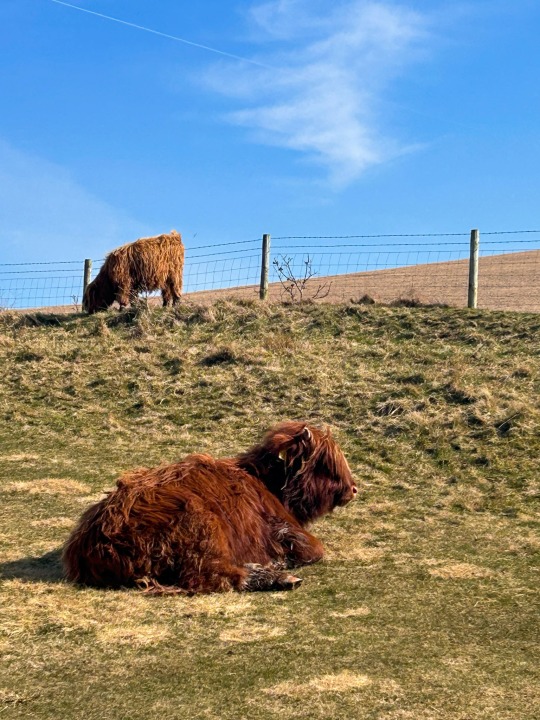

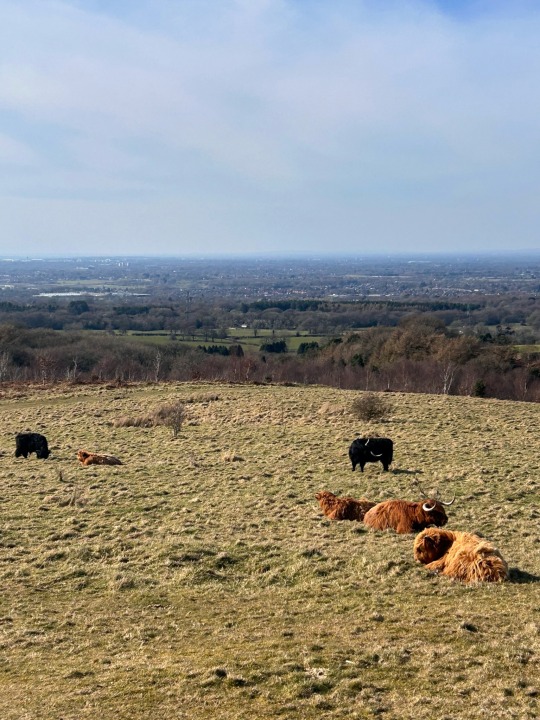
A beautiful sunny day inevitably means I end up in this familiar place again... but can you blame me when there are such stunning views and lovely architecture to be enjoyed?! I had a wonderful day and even got up close to some Highland cows!!
#pride and prejudice#pride and prejudice 1995#jane austen#lyme park#national trust#highland cow#my pics#pemberley#<- source: me#i wanted to pet the fluffy cows but then i saw their horns and no thanks#also went to That Body Of Water and there were some geese(?) ominously stood on the bank who then dived into the water#welcome back mr darcy
15 notes
·
View notes
Text










Christopher Lambert!♰※♰
#christopher lambert#mata hari#the blacklist#la source#highlander#sharknado#ncis los angeles#capitaine#switzerland
7 notes
·
View notes
Text







Methos in Highlander: The Source (2007)
#methos#highlander#highlander the source#highlander the series#peter wingfield#finally did this one#was planning to do it last year#but other things in life distracted me#no i don't like this movie#highlanderedit#my edit
99 notes
·
View notes
Text
youtube
0:43 "firsht" 😭😭😭
#and he keeps saying it 😭😭😭#linguistics nerds please help#i've been trying to read up about this linguistic feature in mid-ulster english#(which I think is colin's accent??? idk. correct me if i'm wrong)#pronouncing the “rst” cluster as “rsht”. i could not find any mention#it's been driving me insane bc i know it is a thing. in my heart#i've only seen it referenced it in relation to scottish accents like#highland english#which to be fair i think has influenced northern irish english varieties too#but i was looking for a mention of this in relation to ulster english specifically#english nerds please talk to me. give me a source#please message me i am begging you on my knees and i'm so normal about this i promise#colin morgan
72 notes
·
View notes
Text


IGNIS FATUUS
#Final Fantasy XIV#FFXIV#FFXIV Screenshots#gpose#Hyur Highlander#Ces edits#somehow it ended up looking as if he has frosted tips for some reason?#might be the gpose light sources reflecting weirdly and then the PS filters highlighting them weirdlier
6 notes
·
View notes
Text
[In 1659]
Penelope: Hey, you, in the coach, you carry a sword, why don't you use it?
Pepe: Ah could use eet now, but zen ah could not do zees. (Kisses Penelope)
3 notes
·
View notes
Text
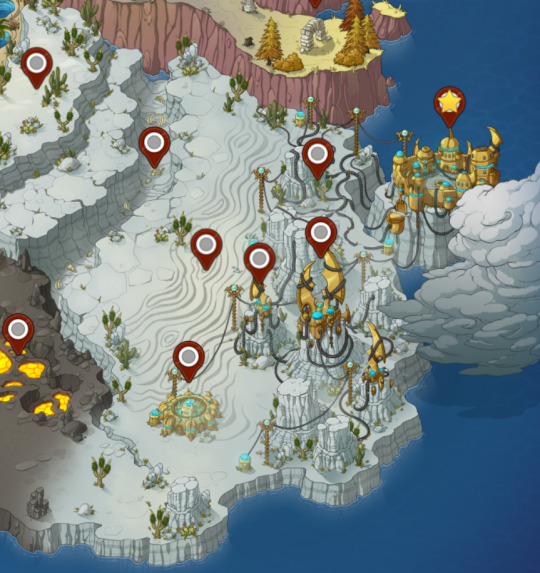
#Shifting Expanse#the Shifting Expanse#flight rising#fr polls#fr posting#flight rising poll#lightning flight#Highland Scrub#The Source#Carrion Canyon#Wiretangle Walk#The Lightning Farm#Charged Barrens#Tempest Spire#Turrets of Goldensparc#tumblr polls#my polls#polls#poll time#fandom polls
2 notes
·
View notes
Text

why is a fanfiction.net smutfic the first thing that comes up when im looking up an ancient egyptian text
#now#ive never seen highlander#but i did kinda read the fic out of curiousity and it was pretty good actually#the first chapter anyway the entire fic is 80k words lol#but they also quoted the epic of gilgamesh and that was fun#AND they cited their sources in the footnotes#so at first i thought it was funny a fanfic came up before anything on the actual egyptian text#but now im just impressed with the fanfic and maybe i wanna watch highlander now?? maybe
0 notes
Text

#Highlander#Highlander: The Series#Highlander The Series#Highlander franchise#Highlander series#there can be only one#Adrian Paul#Duncan MacLeod#Highlander: Endgame#Highlander: The Source#Highlander Endgame#Highlander The Source#hug kiss marry kill
5 notes
·
View notes
Text
Giant Emerald Pill-Millipede: when these enormous millipedes are all rolled up, their bodies can be as big as a baseball, a tennis ball, or a small orange

This species (Zoosphaerium neptunus) is commonly known as a giant emerald pill-millipede. The females can measure up to 90mm long (roughly 3.5 inches), making this the largest species of pill-millipede in the world.

There is a significant degree of sexual dimorphism in this species, with the males measuring only about 45mm (1.8 inches) long -- roughly half the size of the females.
Giant emerald pill-millipedes are found only in Madagascar, which is home to several endemic species of giant pill-millipedes (order Sphaerotheriida). The Malagasy name for giant pill-millipedes is "Tainkintana," which means "shooting-star."

Pill-millipedes use conglobation as a defense mechanism, which means that they can curl their bodies up into a spherical shape so that their dorsal plates form a protective shield around the softer, more vulnerable parts of their bodies, just like an actual pill-bug or a "roly-poly."
When they roll themselves up completely, they look almost like gently polished chunks of malachite, emerald, or jade.

Giant emerald pill-millipedes will sometimes form large swarms that travel together as a group. This is the only species of giant pill-millipede that engages in any sort of swarming behavior, and the purpose of that behavior is still unclear. The swarms often contain thousands of individuals, with almost all of them moving in the same direction, even when there is no physical contact that might allow the millipedes to "herd" one another along.
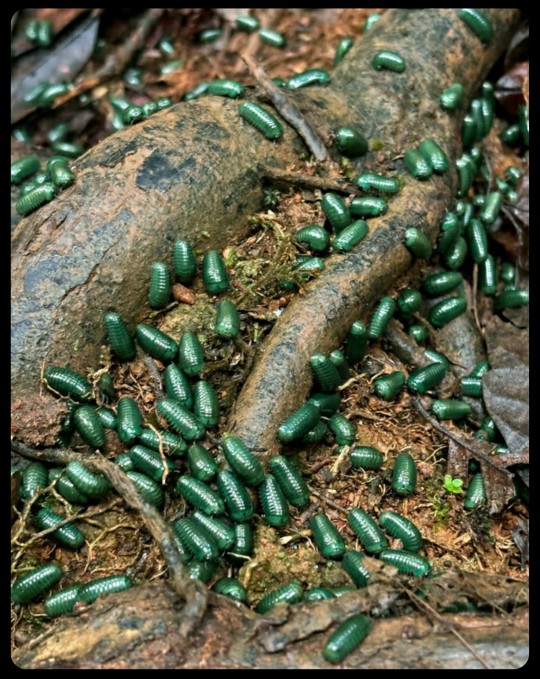
Their swarming behavior also has some very peculiar features, as this article explains:
During swarming, Zoosphaerium neptunus individuals pay little attention to their surroundings; many specimens were observed walking straight into and drowning in small puddles. Some swarms even display ‘cliché lemming behaviour:' in Marojejy, a large part of a swarm walked into and drowned in a small river.
No single specimen was observed walking ‘against the current,' all specimens were moving in the same direction (southeast), even when not in contact with one another.
Of 273 randomly collected individuals, 105 were males, while 168 were females. The males were 8.3 - 14.1 mm wide (average width 10.4 mm). According to the inner horns of the posterior telopods, all males were sexually mature. The females were 9.95 - 15.4 mm wide (average width 11.4 mm). All females displayed non sclerotized vulvae and were sexually immature.
Some researchers argue that the swarming serves as a defense mechanism, providing a layer of protection (or at least some cryptic cover) against local predators, but the swarming behavior is still poorly understood.

Important Note: I just want to remind everyone that these animals belong in their own natural habitat -- they should not be trapped, bought/sold, traded, shipped, collected, or kept as pets. This particular species does not survive well in captivity, either, and the demand for these "exotic" invertebrates is putting the wild populations in jeopardy. The previous article discusses those issues, too:
Another possible threat for Z. neptunus swarms are collections for the pet trade. There exists a large demand in Japan, Europe and North America for 'green -eyed monsters’ as pets. Giant pill -millipedes from Madagascar unfortunately have a very short survival time in terraria. The species is specialized on low-energy food (dead leaves), and adapted to the cool climates (<20°C) of the highlands. Specimens in terraria often starve to death quickly.
So I know that they're adorable and really, really fascinating...but let's just let them be their chunky, adorable little selves out in the wild where they belong.
Sources & More Info:
European Journal of Taxonomy: Seven New Giant Pill-Millipede Species and New Records of the Genus Zoosphaerium from Madagascar
Madagascar Conservation & Development: Swarming Behavior in the World's Largest Giant Pill-Millipede, Z. neptunus, and its Implication for Conservation Efforts
Bonn Zoological Bulletin Supplementum: The Giant Millipedes, Order Sphaerotheriida (an Annotated Species Catalogue) (PDF)
African Invertebrates: Madagascar's Living Giants: Discovery of Five New Species of Endemic Giant Pill-Millipedes from Madagascar (PDF)
#arthropods#giant green pill-millipede#zoosphaerium neptunus#myriapods#diplopoda#millipedes#island gigantism#entomology#evolution#malagasy#cool animals#bugs#insects#animal facts#madagascar#pill-millipede#pill bugs#but not really#Tainkintana#conglobation#swarming#conservation#giant emerald pill-millipede
10K notes
·
View notes
Text
We can handle any water heater need.
Highland Park's Trusted Source for Emergency Water Heater Solutions.
No hot water? Don't panic! Here at Emergency Plumbing, we're your local, licensed plumbers in Highland Park, IL, specializing in emergency water heater repair and installation for all your needs - 40, 50, 75 gallons, electric, natural gas, traditional or tankless. We service all major brands, including Bradford White. Get fast, reliable service 24/7!
We can handle any water heater need, including:
Water heater repair: From minor leaks to complete breakdowns, our skilled technicians can diagnose and fix any issue with your traditional or tankless water heater. Water heater installation: Whether you're building a new home, replacing an old unit, or upgrading to a more efficient model, we'll guide you through the selection process and handle the installation seamlessly. Water heater size: We offer a variety of sizes to suit your needs, including 40-gallon, 50-gallon, and 75-gallon options. Fuel type: We service both electric and natural gas water heaters, ensuring we have the expertise to handle your specific unit. Water heater style: We can install and repair traditional water heaters with storage tanks or cutting-edge, on-demand tankless water heaters.
Contact us today for a free consultation or to schedule an emergency water heater repair service. We look forward to serving you and keeping your Highland Park home comfortable!
Phone 224-754-1984
1 note
·
View note
Text
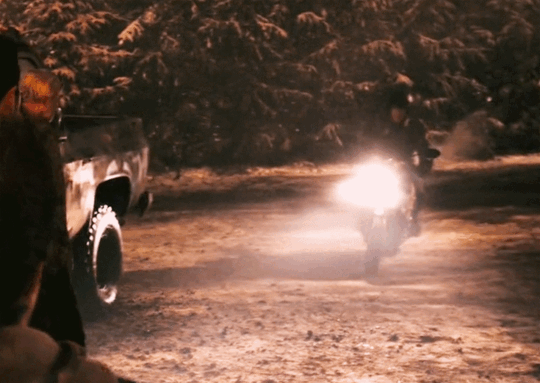

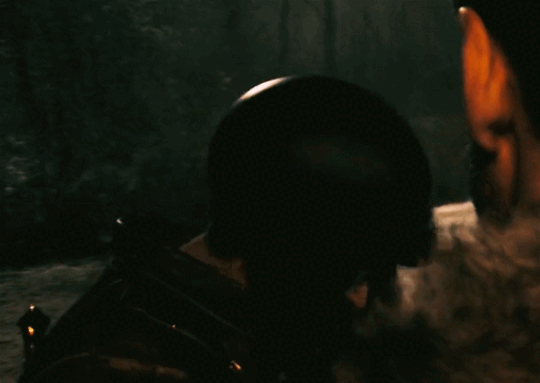

The reunion of Methos and Duncan MacLeod in Highlander: The Source (2007)
#highlander#highlander the source#methos#duncan macleod#peter wingfield#adrian paul#highlanderedit#my edit
36 notes
·
View notes
Text
Highlander 1 (1986), 2: The Quickening (1991), 3: The Sorcerer (1994), 4: Endgame (2000), 5: The Source (2007), and 6: The Search for Vengeance (2007)
An immortal highlander seeks to build a normal life with his love but is caught in the machinations of other immortals who wish to decapitate him to absorb his power.
Much of the back stories applied are fairly standard but still allow some character development which is significant when dealing with a character who hasn’t changed much for centuries. The lore is quite variable but still interesting and the basic structure always remains the same like the decapitation and need to kill other immortals.
An irritating feature of the films as a franchise is that the core story is rewritten and then retold with every single installment. So there are entire scenes that are essentially just recap with minor details changed. The series also contains a great deal of repetition since the basic narrative is always the same and it only has so much flexibility.
The two films in the franchise that stand out the most are the second and sixth ones because they incorporate science fiction spins into the story which at least keeps a story that’s already been done interesting. The 6th in particular is engaging because it’s an anime so the aesthetics are a big change but still welcome and effective, especially for the gore.
Some of the films are disappointing because the action is occasionally lax on a small budget, with brief glimpses given to what should be big battle scenes. Some fights are also rather underwhelming, especially when the set-up suggest it could be interesting, the most guilty of this is the anime one which implies a good fight will be coming up and then the protagonist kills his adversary of in one swing of his sword, barely seen on screen.
Highlander: 4/10 -It’s below average, but only just!-
Highlander 2: 4/10 -It’s below average, but only just!-
Highlander 3: 3/10 -This one’s bad but it’s got some good in it, just there-
Highlander 4:3/10 -This one’s bad but it’s got some good in it, just there-
Highlander 5: 3/10 -This one’s bad but it’s got some good in it, just there-
Highlander The Search for Vengeance: 3/10 -This one’s bad but it’s got some good in it, just there-
-The lead actor in the first film had voice coaching sessions to create an accent that was non-specifically foreign since the character has spent many years in many countries.
-The production of several of the films were hindered by injuries due to untrained actors attempting their own stunts.
-Early sub-titles for the 4th film included “The Immortals” and “The Search for Connor”.
#Film#Review#Highlander#1986#Highlander 2#Highlander 3#Highlander 4#Highlander 5#Highlander 6#Highlander 2 The Quickening#Highlander 3 The Sorcerer#Highlander 4 Endgame#Highlander 5 The Source#Highlander 6 The Search for Vengeance#Highlander The Quickening#Highlander The Sorcerer#Highlander Endgame#Highlander The Source#Highlander The Search for Vengeance#Science Fiction#Sci Fi#Fantasy#1991#1994#2000#2007#JasonSutekh
0 notes
Text

The pylidaigh, a type of vampiric snow ghost, as imagined in folklore in and around the Highlands.
This is a ghost believed to come into being when a person dies in the snow and their body is not found before their soul (still trapped without its funeral rites) 'freezes' inside of it. The body then reanimates into a pylidaigh's twisted form. It looks like someone who slowly died of starvation, just a thin layer of flesh over bones. Its skin is as white as the snow itself, so pale it can blend seamlessly into a blizzard. Most of its body appears subtly stretched and lanky, save for its exceptionally unsubtle long, skinny arms, which drag on the ground behind it when it walks. After a big meal of blood, its belly swells like the abdomen of a tick.
A pylidaigh can only tread across snow and ice, and so doorways and windows are best kept clear of snowfall during the winter in order to prevent it from reaching inside. It mostly comes out to hunt during blizzards when there is little that can prevent it from catching its victims.
In spite of its fragile appearance, a pylidaigh is supernaturally strong, and can run at great speeds when it wants to. No mortal weapons can pierce its body, nor can any bonds known to craftsmen hold it in place. It is usually said that chains forged like iron but made out of ice can bind a pylidaigh and render it immobile, but this smithing technique remains tragically elusive to the average joe.
This ghost is either cast as a wildly dangerous but tragic figure, or one that is more simply malicious. In either case, it is described as experiencing nothing but bitter cold. It shivers endlessly. It retains distant memories of what it was to be alive, and it is motivated by a futile desperation to experience the feeling of warmth again.
In more sympathetic framings, it is described as using its freaky gibbon arms to capture its victims and pull them into an embrace, rather innocently trying to warm itself against their body. This inevitably fails, and the embrace becomes a bone crushing squeeze. When that too fails to warm the ghost, it rips out the person's throat and drinks their blood until the victim is as cold and drained as the pylidaigh itself.
In other cases, this more pitiable narrative of a ghost seeking warmth with no comprehension of its actions is discarded in favor of making it purely monstrous. Here it is a type of vampire with an insatiable thirst, practically a physical manifestation of the worst of winter itself. Some tales acknowledge both variants, suggesting a pylidaigh's violent attempts to warm itself may be initially devoid of malice, but turns into an act of furious jealousy of the warmth of the living after years of suffering.
The only (more or less) surefire method to permanently kill a roaming pylidaigh involves trapping it with fire. They are attracted to any source of heat, and will attempt to warm themselves with the flames (if not tempted away by a juicy living human body). The fire itself cannot kill them (as the sheer cold of their body is more powerful even than flame) but they can be trapped if kept near the fire long enough for the snow it depends upon to melt. This does not kill the pylidaigh either. The monster will remain in stuck in place (and potentially become a threat again if it snows more) for the duration of the winter. Only when the spring comes and all the snow melts does it revert into a normal human carcass (though mysteriously invulnerable to decay), at which point it can be cremated.
Pylidaigh in the wilds also revert to a human corpse during the snowless seasons, but will roam again each following winter unless it is burnt in the interim. It is of critical importance that any human corpse found in high mountain pasture is cremated- not only out of respect for the poor soul trapped as an earthbound ghost, but to prevent the threat of the possible dormant pylidaigh emerging next winter.
#Imagine this thing Naruto running towards you at 20 mph#This was loosely inspired by me getting hypothermia once while camping very close to a town but on a mountainside a few#miles above it. Think it would be considered moderate I knew what was happening but was very confused and disoriented#Knowing my body was too fucking cold and my heartbeat was too slow and I couldn't stop shivering#Looking down on the lights below and being like Bro I Have To Get There And Get Warm Or Am Going To DIE#I woke up from sleep while in this state which like. Thank god because otherwise I might have legit died but it felt like I was dreaming.#It was so surreal just like walking then driving towards the lights knowing I NEEDED to get there NEEDED to get warm.#I was able to drive down without getting into an accident and got to a hospital so it ended up okay and my arms didn't strecth#out like a gibbon or anything.#folklore#hill tribes#I've been working on a pylidaigh folktale for a few days but it's taking a while because I keep going back and fourth on whether#I'll write it in character voice or not
997 notes
·
View notes
Text
Round 3 - Lissamphibia - Urodela




(Sources - 1, 2, 3, 4)
Order: Urodela
Common Name: “salamanders”
Families: 9 - Cryptobranchidae (“giant salamanders”), Hynobiidae (“Asiatic salamanders”), Ambystomatidae (“mole salamanders” and “Pacific giant salamanders”), Amphiumidae (“amphiumas”), Plethodontidae (“lungless salamanders”), Proteidae (“mudpuppies” and “Olm”), Rhyacotritonidae (“torrent salamanders”), Salamandridae (“true salamanders” and “newts”), and Sirenidae (“sirens”).
Anatomy: larval stage with gills, some aquatic species retain the gills as adults; basal tetrapod body form with a cylindrical trunk, four limbs, and a long tail; some aquatic species have reduced or absent hind limbs (image 3); moist smooth, velvety, or “warty” skin which is permeable to water and used in respiration; no claws; no ears or eardrums, but have an opercularis system allowing them to detect airborne sound
Diet: invertebrates and small vertebrates
Habitat/Range: only in the Holarctic and Neotropical regions; 1/3 of the known salamander species are found in North America, with the highest concentration found in the Appalachian Mountains region
Evolved in: Middle Jurassic; the oldest known stem-salamander (part of the clade Caudata) is Triassurus from the Triassic of Kyrgyzstan
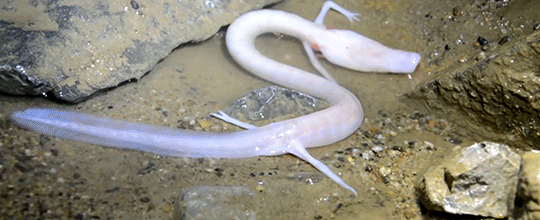
Propaganda under the cut:
Salamanders are capable of regenerating lost limbs as well as other damaged parts of their bodies, including vital organs such as their heart, jaw, and parts of the spinal cord.
Due to their popularity in the pet trade, the Axolotl (Ambystoma mexicanum) is perhaps the most famous salamander. They are paedomorphic, maturing without undergoing metamorphosis into a terrestrial adult form, instead remaining fully aquatic with obvious external gills. They resemble larvae of the occasionally paedomorphic Tiger Salamander (Ambystoma tigrinum). Critically endangered in the wild, they originally inhabited a large lake in the Mexican highlands known as Lake Texcoco, along with a number of smaller, interconnected lakes such as Lake Xochimilco and Lake Chalco, and were abundant enough to form a staple in the Aztec diet. These lakes were mostly drained by Spanish colonists after the conquest of the Aztec Empire, leading to the destruction of most of the Axolotl's natural habitat, which is now largely occupied by Mexico City. Due to continued urbanization in Mexico City, which causes water pollution in the remaining waterways, as well as the introduction of invasive species such as tilapia and perch, the Axolotl is nearly extinct. Six adult Axolotls (including a leucistic specimen) were shipped from Mexico City to Paris in 1863, where French scientists began studying them. They were found to be able to regenerate body parts, could be artificially induced to metamorphosize, and were hybridized with Tiger Salamanders. Their success in scientific research has also led to them being prolific in the pet trade, and one restaurant in Japan even sells fried Axolotls as a menu item. Despite their large population in captivity, these Axolotls are inbred and often contain Tiger Salamander genes, and can not contribute to the tiny population of pure wild Axolotls. Lake Texcoco and Lake Chalco no longer exist, so they are native only to the freshwater lake Xochimilco, which remains a remnant of its former self, existing mainly as canals. Only 2 wild Axolotls were spotted in 2013, after months of searching. Currently, the Lake Texcoco Ecological Park is being established to restore natural spaces to Mexico City, and hopefully provide a home for the Axolotl and other Mexican biodiversity.
The similarly critically endangered Anderson's Salamander (Ambystoma andersoni), from Zacapu Lagoon in the Mexican state of Michoacán, is one of the few species of living amphibians to occur in brackish or salt water.
Salamanders of the family Plethontidae have tongues that reach up to 80% of their body length, are attached to their skeleton, and fire ballistically at prey in less than 20 milliseconds.
Slimy Salamanders (Plethodon glutinosis) do not lay their eggs in water, so they stay near them to keep them from drying out, as well as to defend them from predators.
The largest living lissamphibian is the South China Giant Salamander (Andrias sligoi) (image 2), with the largest known individual having been 1.8 m (5.9 ft) long. It is critically endangered due to habitat loss, pollution, and overcollection, and its use in traditional medicine and status as a delicacy has led to it being farmed for meat. It is hoped that this will take the heat off the wild salamanders, though wild salamanders are still often caught to bolster breeding populations in meat farms. It is unknown if any South China Giant Salamanders still exist in the wild, and those on farms are likely hybridized, as Andrias species are often caught indiscriminately and are able to interbreed. Of the known individuals that survive in zoos, all are males, and are nearing the end of their natural lifespans.
The Eastern Newt (Notophthalmus viridescens) is perhaps best known for its striking, land-dwelling juvenile stage which is colloquially called a Red Eft. Eastern Newts have three stages of life: the aquatic larva/tadpole, the terrestrial Red Eft, and the aquatic adult. Having a terrestrial juvenile stage allows young Eastern Newts to disperse to new ponds. They will spend 2-3 years in the Red Eft stage before choosing a pond and transforming into an adult.
The Olm, or Proteus (Proteus anguinus) (see gif above), is an paedomorphic cave-dwelling salamander, and the only exclusively cave-dwelling chordate found in Europe. It is entirely aquatic, eating, sleeping, and breeding underwater, as well as adapted for life underground in complete darkness. The Olm's eyes are undeveloped, leaving it blind, while its other senses, particularly those of smell and hearing, are more acutely developed. They can also sense both electric and magnetic fields. They have unpigmented skin, but will develop color if exposed to weak light for a few hours a day. They can live to be 100 years old, and go for years without food. This slow metabolism allowed one tracked Olm to stay in same spot for over 7 years! In the 1600s, Olms washed up from the underground waters were believed by local people to be the offspring of a cave dragon. The Olm is a symbol of Slovenian natural heritage, and was depicted on the Slovenian tolar coin, as well as being the namesake of the oldest Slovenian popular science magazine, Proteus, first published in 1933.
235 notes
·
View notes